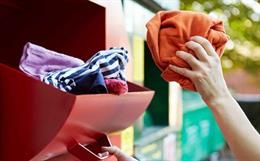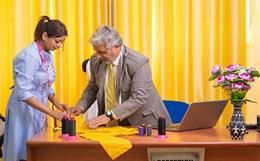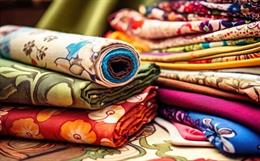Odour resistant fabrics may be versatile and cost-effective, but are they safe?
There are many innovative fabric trends on the rise; from the utilization of pineapple leaves, to waterless denim. It seems as though a new kind of fabric technology is popping up everyday. There are several technologies, however, that have been around for a while. One, being odour resistant fabric treatments. Brands see a need for clothing (especially activewear) that keeps smells at bay, and they want in on it. What are these treatments, though? And, are they worth the hype?
What Are Odourless Fabrics?
Odourless, or odour resistant, fabrics are those with an antimicrobial component that is designed to eliminate bacteria growth before it mixes with sweat to create odour. These fabrics are typically treated with silver-based compounds and chemicals such as triclosan or triclocarban, both of which are harmful to bacteria.
How They Work
So, how exactly does this technology work? Well, there are several different kinds of formulations out there, developed by different companies. Here is how some of the main treatments used on the market today work.
Scentry
Developed by Microban, Scentry is an odour capture technology that eliminates persistent odours that ruin clothes, giving them a longer lifespan (less waste!). How Scentry works is the treated fibers capture and neutralize odours, and then release the odours when washed. Scentry is sustainable, safe, and has earned Oeko-Tex's Eco Passport Certification; making it the ideal treatment for sustainable fabrics.
Brands who use Scentry
Polygiene
Polygiene aims to make clothes odour-free so they don't need to be washed as frequently. Polygiene's Odour Crunch technology captures and breaks down odours by the power of its main ingredient, silica. Odour molecules adhere to the silica particles, and are then broken down to carbon dioxide and water.
Brands who use Polygiene
Agion
Sciessent offers three different types of odour-eating treatments for textiles: Agion, ActiveXL, and LavaXL. Agion is among the cleanest and most sustainable, as it extends product lifespans and is bluesign approved. Agion is designed to automatically release antimicrobial components, such as ionic silver, when prime conditions for bacteria growth arise.
Brands who use Agion
XT2
"Play more, stink less" is the XT2 motto, and that is exactly what this fabric technology allows its wearers to do. XT2 utilizes the properties of silver within the polyester sheath to prevent the growth of bacteria and fungi, which attach themselves to sweat and in turn cause odour.
Unlike the others, it is not a treatment. So, the silver properties will not wear off. When sweat reaches a garment, XT2 is instantly activated and works its magic to maintain a long-lasting, odour-free environment.
Brands who use XT2
Applications
1. Apparel
Apparel is among the many applications of odour-resistant fabric, and is perhaps the most common application. Odour resistant fabric is widely utilized in activewear, but has also been used for lingerie, outerwear, even denim. Some brands who are proponents of these fabric treatments include Patagonia, Ably Apparel, and Under Armour. Ably Apparel, specifically, has made a name for themselves because of their use of odour-free fabrics in their collections.
2. Footwear
The foot creates a perfect climate for bacteria to fester, which is why there is such a high demand for odour resistant fabrics in footwear. In the past, brands such as Adidas and Skechers have used Agion microbial fabrics in their soccer cleats and sneakers to make them performance-friendly.
3. Home
Surprisingly, the applications of odour resistant fabrics expand to the home as well. Microban's technology, in particular, is said to add hygiene protection to home goods such as shower curtains, bedding, and mattresses; by creating a barrier against bacteria, mold, mildew, and other microbes that create odour. Crypton is one of the leading suppliers of odour-free fabrics for the home, and they pride themselves on being stain-resistant and sustainable.
The Benefits
Research shows that 69 percent of consumers are likely to choose activewear with odour resistant technology. So, clearly these fabrics have appeal. Among the key benefits to these fabrics are the following:
They preserve and maintain the quality of a garment, therefore, extending its lifespan.
They stay cleaner longer, and require fewer washes (saving water in the process).
The technology is long-lasting, and stays put throughout the garment's life.
The Problems
Several concerns regarding odour resistant fabric technology and treatments have been brought to the public's attention. While some of these concerns have not been backed by substantial research, they are worthy of consideration. Dr. Francine Yep, a family practitioner at John Muir Health, has suggested that wearing clothes made with antimicrobial fabrics may not be the best thing for our immunity and organ development. Especially, those fabrics that contain silver. It is said that these fabrics deplete the skin's natural bacterial layer; something we need to survive. While this discovery hasn't raised a great deal of concern, and certainly isn't lethal, we should remain cautious.
As more consumers wish to stay stink-free, it is safe to say that odourless fabric technology is not going away anytime soon.
This article has not been edited by Fibre2Fashion staff and is re-published with permission from Synzenbe.com








